

Congratulations!
23/24 Graduates
Parsons School of Design
AAS Communication Design
On the Bright Side
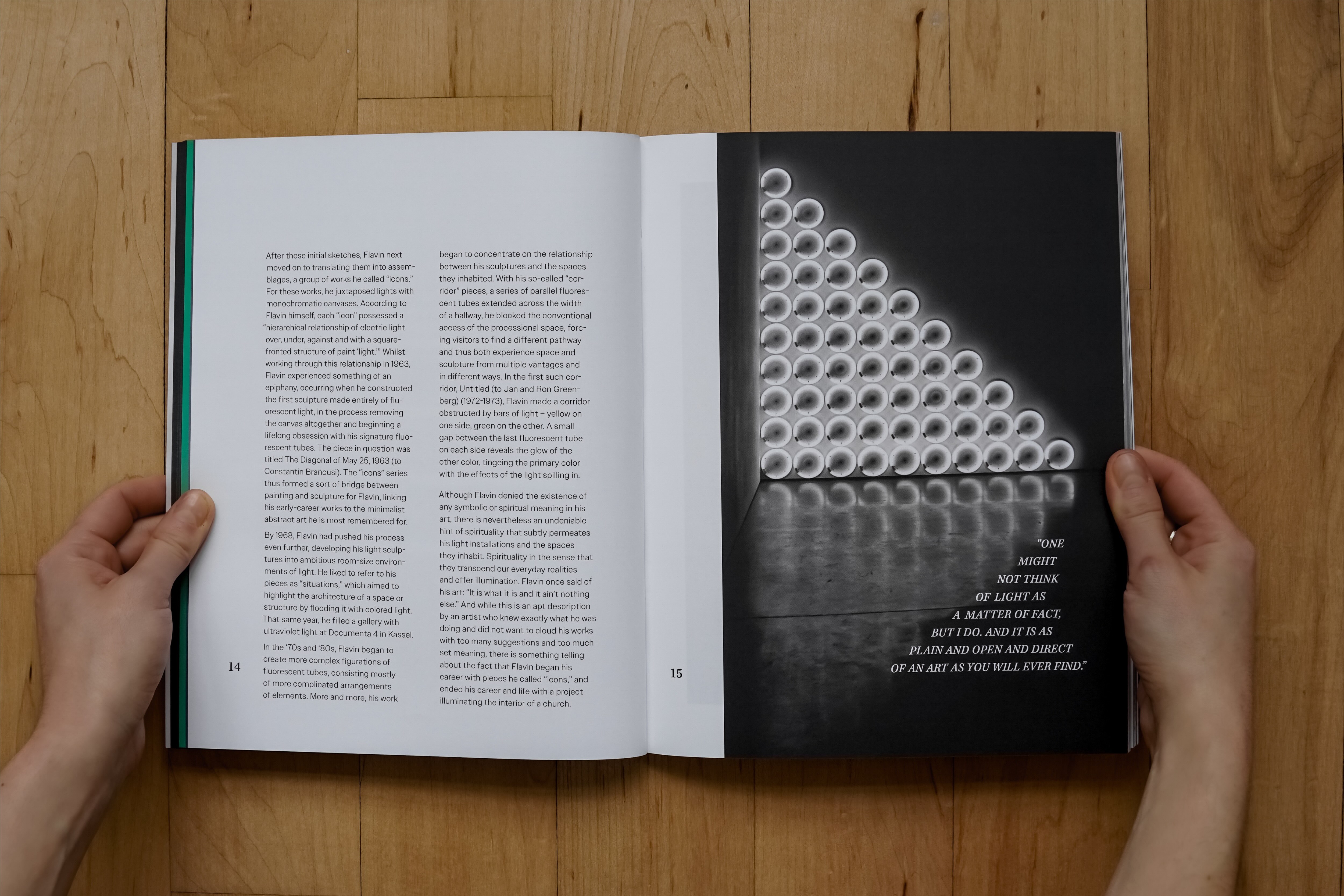
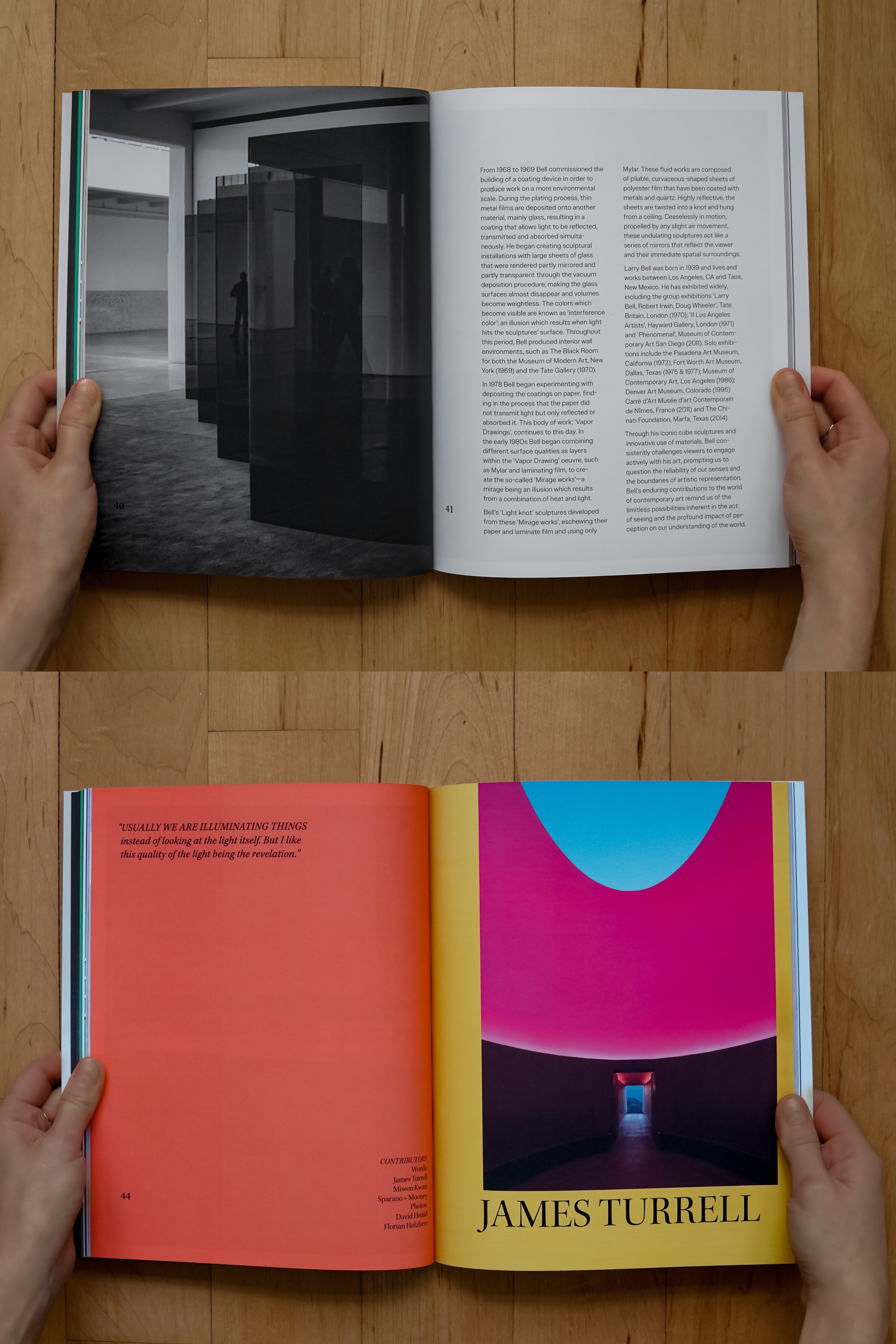
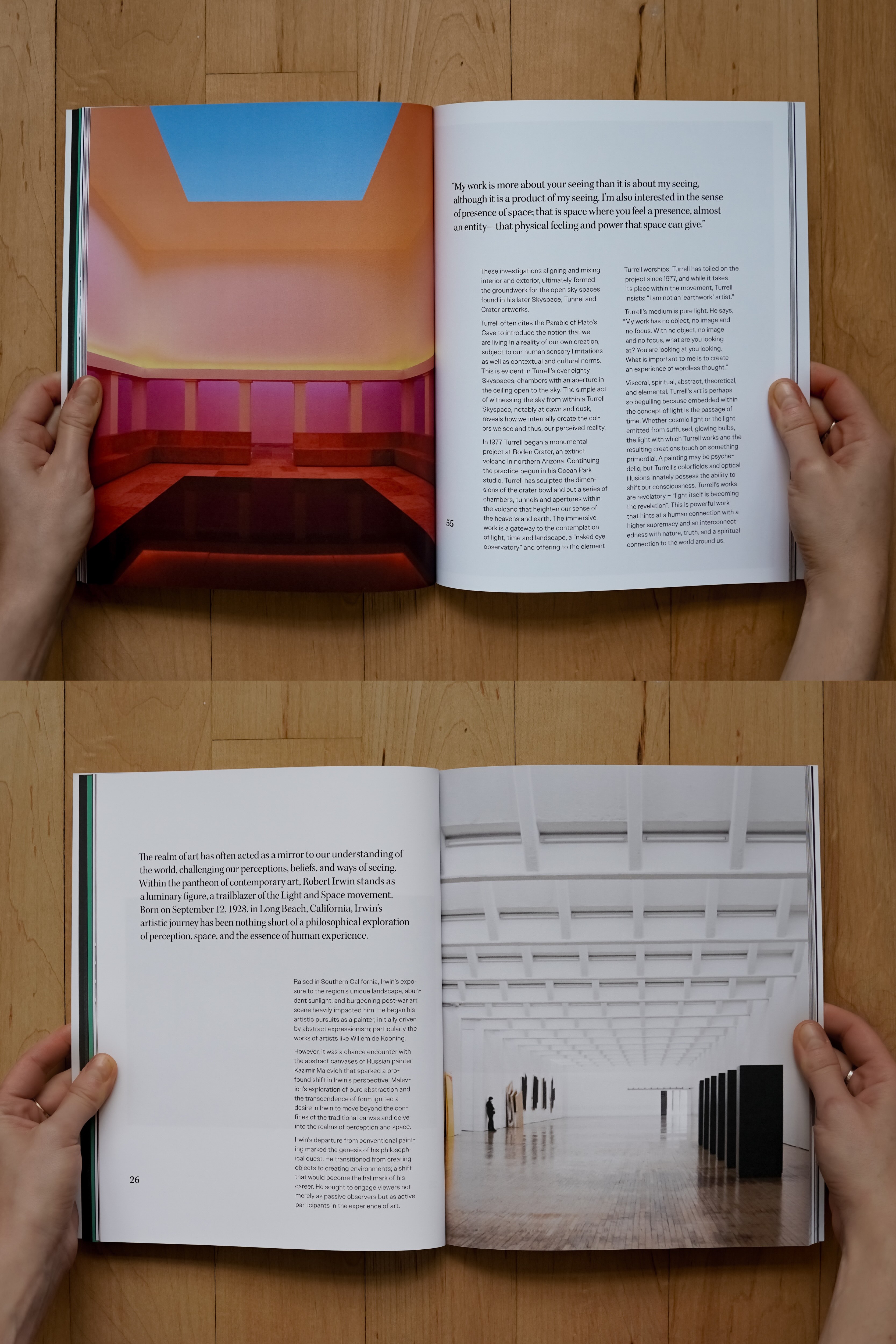
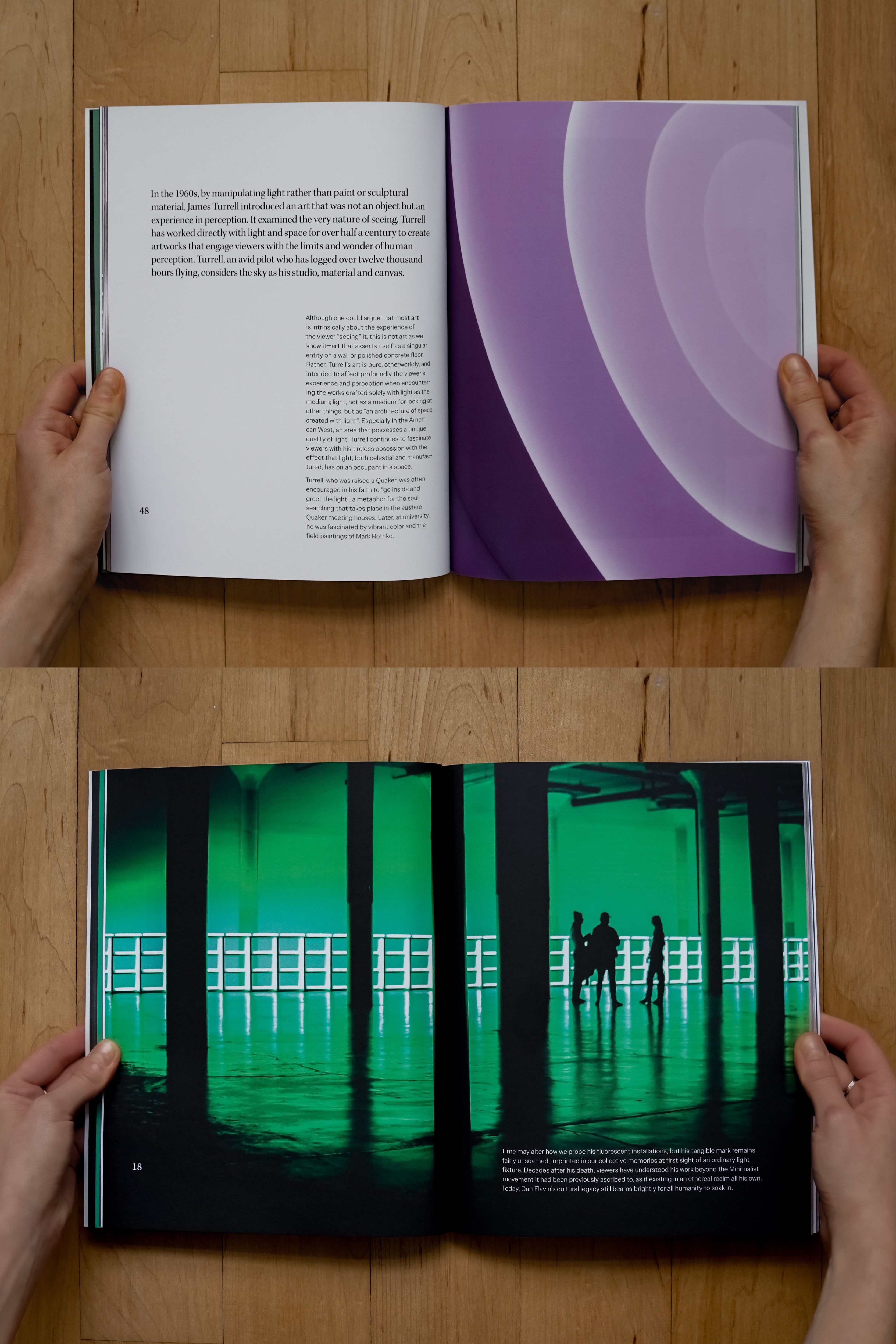
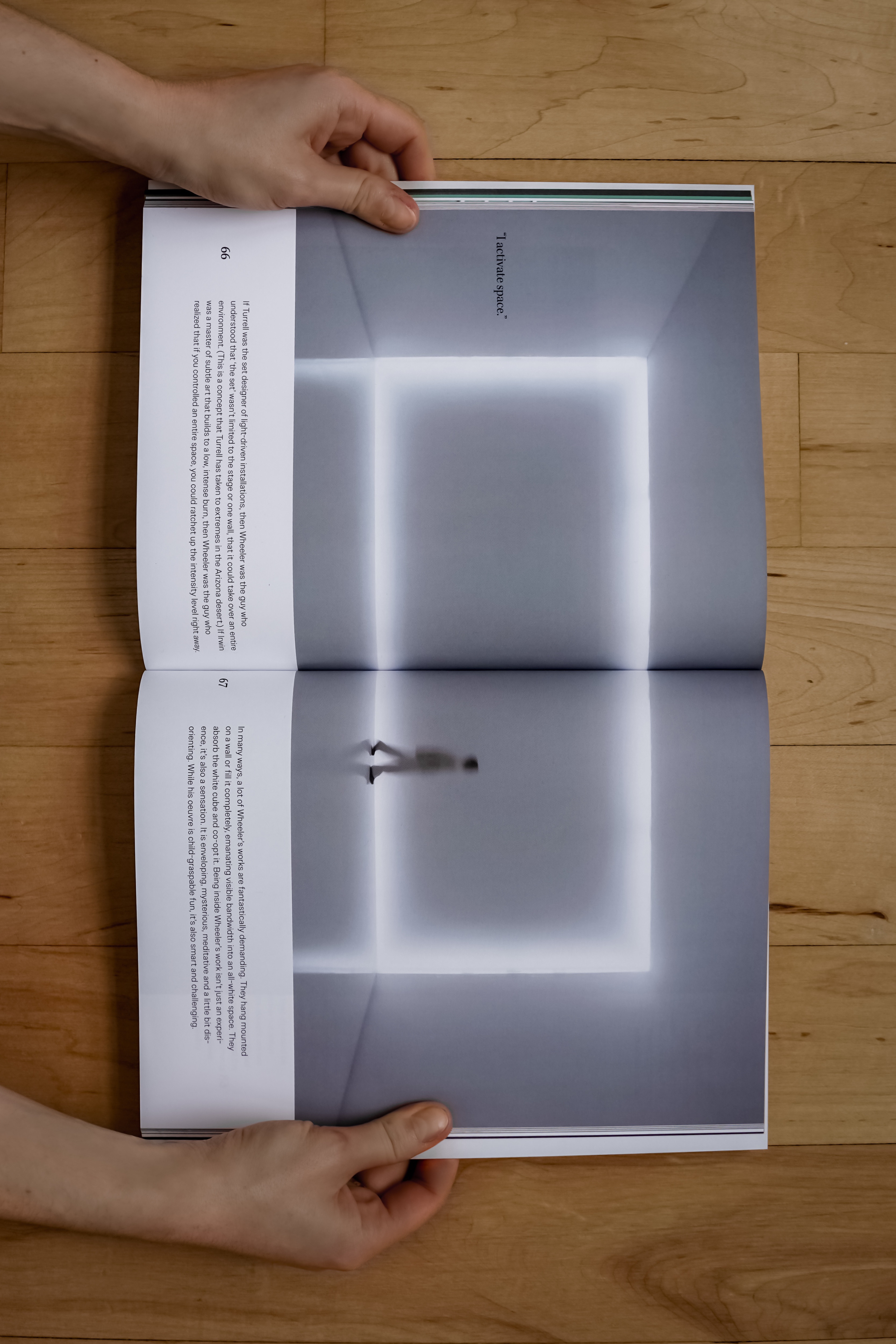
Ethereal and atmospheric, yet geometric and analytic, the experiences of the Light and Space art movement perpetually depict this striking paradox, and thus demand active and often multi-sensory participation.
The Light and Space art movement more broadly refers to West Coast minimalist art of the 1960s and 1970s epitomized by an organic experience. In fact, there is no single defining aesthetic amongst the loosely affiliated group of Light and Space artists, other than a determined preoccupation with the viewer’s perception and participation.
For that reason, it could be said that there is no more universal artistic movement than that of the Light and Space, and ultimately, no better explanation as to why these works impact me so profoundly. Much like music, light speaks a universal language that resonates with all humans; it holds the power to evoke emotions and sensations far beyond the realm of words.
As a photographer, I am inherently drawn to the interplay of light and environment, making this movement an obvious subject for my lens.
My photography ultimately became the cornerstone for On the Bright Side, which offers a comprehensive exploration of these artists’ pioneering works through a blend of my own photography and cumulative research. Spotlighting luminaries like Dan Flavin, Robert Irwin, Larry Bell, James Turrell, Doug Wheeler, Mary Corse, and Phillip K. Smith III, On The Bright Side provides a colourful illumination into these artists’ visionary perspectives and underlying philosophies that inform their sensational creations.